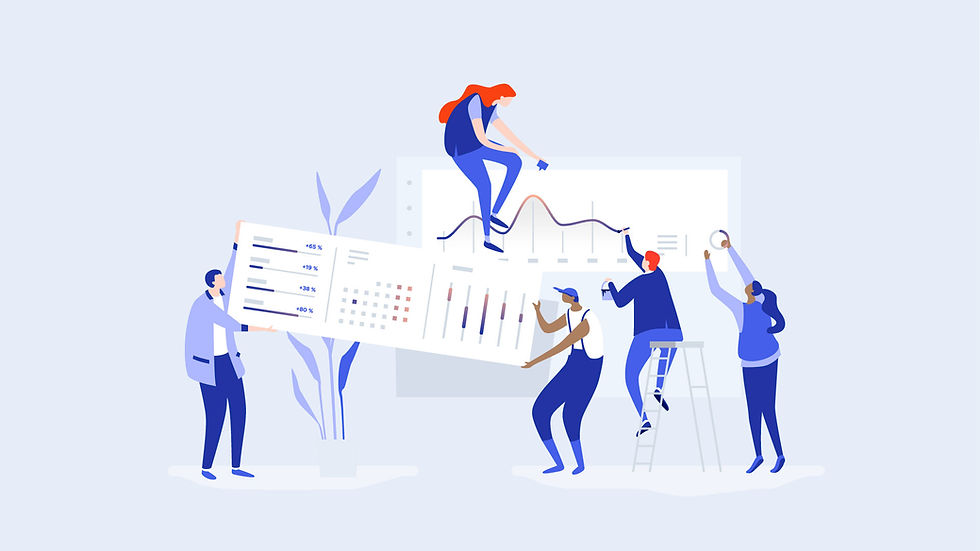AI in Talent Acquisition: Save 80% of your sourcing time with PeopleGPT (Juicebox)
- Franziska Klappoth
- Oct 14, 2024
- 4 min read
As a talent acquisition consultant, I’ve always been on the lookout for ways to improve my clients' hiring processes. The goal? To build a lean, efficient, and effective talent acquisition strategy that aligns with their unique business needs and reduces employee turnover. Recently, a client hinted me to a new tool called PeopleGPT. And I have to say, it completely transformed how I approach talent acquisition sourcing strategy.
From weeks to hours fuelled by AI
Before discovering PeopleGPT, sourcing qualified candidates could take me days, if not weeks. I’d spend hours scrolling through endless LinkedIn profiles, many of which didn’t even come close to what my clients were looking for. Always trying to find the balance of a too narrow versus too wide search, which took up valuable time. With PeopleGPT, I’ve reduced this task to just a few hours. What used to take an entire week now takes me less than three hours. The efficiency is incredible. And what’s more, it allows me to focus on quality over quantity—screening fewer, more relevant profiles to build a high-quality talent pool for my clients. This shift from manual, time-consuming tasks to streamlined, data-driven hiring strategies is where AI truly shines.
Cost-effective recruiting for small businesses
Another compelling reason to embrace AI in your recruitment process is the cost-effectiveness it offers. Small businesses often struggle with the high costs of recruitment, especially when relying heavily on external agencies. By integrating AI tools into the talent acquisition setup, businesses can significantly reduce recruiting agency costs and still achieve high-quality hires.
PeopleGPT: 4 advantages that changed my sourcing
We’ve all heard about the promises of AI in recruitment. But there’s often skepticism about how much value these tools can truly add. However, tools like PeopleGPT are proving that AI isn't just a buzzword; it's a real game-changer for talent acquisition strategy. PeopleGPT works similarly to ChatGPT but is tailored for recruiters and talent acquisition specialists.
1. Easy to use: You can just copy paste
Just past your job description and you’ll receive a solid search that you can keep on modifying with the “Edit Filters” button. You can also write your own Boolean search. This function makes it a perfect user experience for Boolean pros or Hiring Manager that want to get hands-on themselves.

2. High ROI: Web search including LinkedIn for a fair price
Based on your keywords and filters, PeopleGPT is crawling the whole web for suitable profiles. This includes also all public LinkedIn profiles. If you take a free plan, you won’t have all the functionalities like exporting your shortlist, or seeing someones email. However, you still get the direct link to their LinkedIn profile and you can reach out via contact request. Keeping in mind that the cheapest LinkedIn Recruiter License (Lite) is starting at roughly 1.500 Euro per year (not even comparing it with the roughly 10.000 Euro corporate recruiter license): this is a big save even if you take the Growth pricing model.

3. All Information at a glance
Once you go through your search results, you just need to click on the name in the list and you receive a short overview on the right side of the window. There you see all the relevant information at a glance. My personal highlights: AI summary and a skill map. This is especially relevant when looking for senior, niche tech profiles. You can also see that there are more functionalities available like adding them to a reach out sequence or revealing their email.

4. Keep your data clean
One major challenge in sourcing and setting up efficient talent acquisition structures is how to organise your data and candidate pool. This doesn’t start with when candidates applying but way before: during first outbound sourcing touch points. The challenge: Different people on the same team are approaching the same candidates without knowing because the data is not saved in one system. This doesn’t leave a good impression with the candidate and is frustrating for recruiters. That’s why it’s so important to feed your Application Tracking System already with outbound recruiting data.
PeopleGPT allows those exports of shortlisted candidates either via Excel or as ATS upload file. It also integrates to the most popular ATS systems on the market.
Leveraging AI in recruiting: achieve more with less
For small and mid-sized companies, especially those in competitive industries like tech, optimising the recruitment process with the help of AI can be a game-changer. Not only does it make hiring more efficient, but it also improves employee retention by ensuring that the right candidates are selected from the start.
If you’re a small business owner or an in-house recruitment consultant looking to improve your hiring process, I highly recommend exploring AI tools like PeopleGPT. They’re a great way to increase productivity, reduce hiring time, and build a stronger, more cohesive team. Plus, they allow you to focus on what really matters: finding the right people who will contribute to your company’s success.
As the talent acquisition landscape continues to evolve, staying ahead of the curve means embracing new technologies that can drive your business forward. And who knows? You might just find that AI is the missing piece in your hiring strategy puzzle.
Need help optimising your talent acquisition strategy? Reach out to me today for personalised talent acquisition process improvement services tailored to your business needs. Let's build a hiring process that not only works but works for you.




Comments